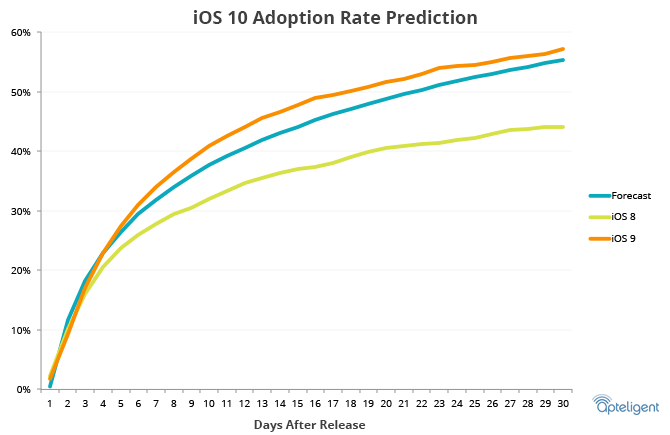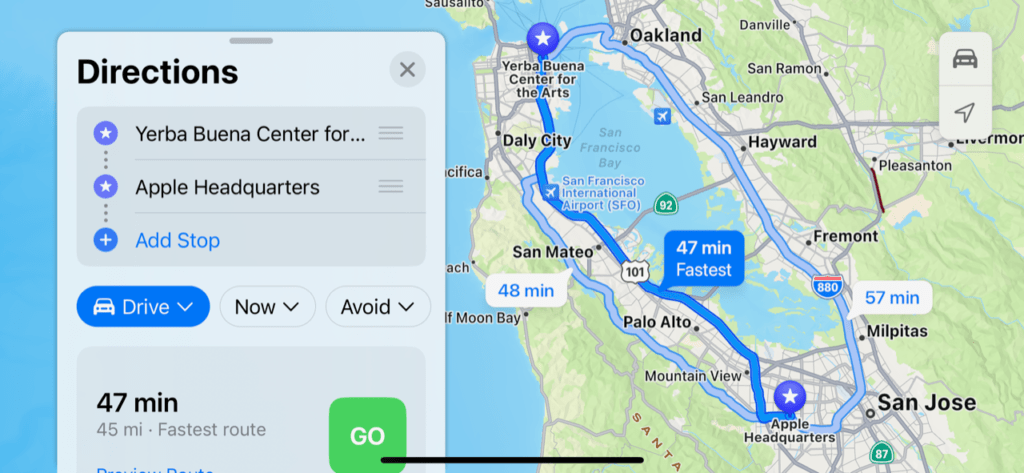Have you upgraded to iOS 10 yet? If not, what are you waiting for? Based on past history and current trends, it seems that iOS 10 has a solid shot of becoming the most-used version of iOS by the end of the month. In my opinion, though, that is a low bar. It really should be almost universally adopted by the end of the month. Other than having an ineligible device, I can’t see any reason someone wouldn’t jump on the new version of iOS right away.
Apple officially released iOS 10 this week, and already everyone in my household has made the switch. Apple generally has a pretty quick adoption rate for new versions of iOS, so it will be interesting to watch and see how long it takes for iOS 10 to emerge as the leading version of iOS in use.
Data scientists at Apteligent have crunched and analyzed more than 178 billion app loads across 26 different releases and updates of iOS to come up with its latest data report. In 2015, Apteligent predicted the iOS 9 adoption rate with a considerable degree of accuracy. The predicted rate is based on actual usage numbers as a proxy for adoption rate.
Some of the key takeaways from the latest data report are:
- Apteligent predicts that iOS 10 will cross 50 percent adoption within 21 days of the release and by the end of the month be on over 55 percent of devices.
- Three weeks to hit 50 percent adoption is impressive. It took Android Marshmallow 11 months to become the most-used Android OS version, and that only represented 35 percent adoption.
- In an attempt to reduce the volume of bugs that are inevitably introduced after every major platform release, Apple launched a public beta for iOS. While that is a step in the right direction, Apteligent still claims there was a huge spike in crash rates. It took developers almost two months to update apps for iOS 9 so they were as stable as iOS 8.
I am one of the guinea pigs that took part in that iOS 10 public beta, so I’ve actually been using the new OS for a month or so at this point. There have been some quirky issues with the beta—but not many and they weren’t very significant. I chalked them up as “par for the course” when playing with a pre-release version of the operating system.
While comparisons to the Android adoption rate are somewhat inevitable, it’s not a very fair comparison. Apple has a significant advantage in that it controls its own hardware development, and it has an ability to push the latest version of iOS directly to iPhone, iPad, and iPod owners without having to go through the mobile carriers.
Check out the full story on Forbes: How Fast Will Users Adopt iOS 10?


